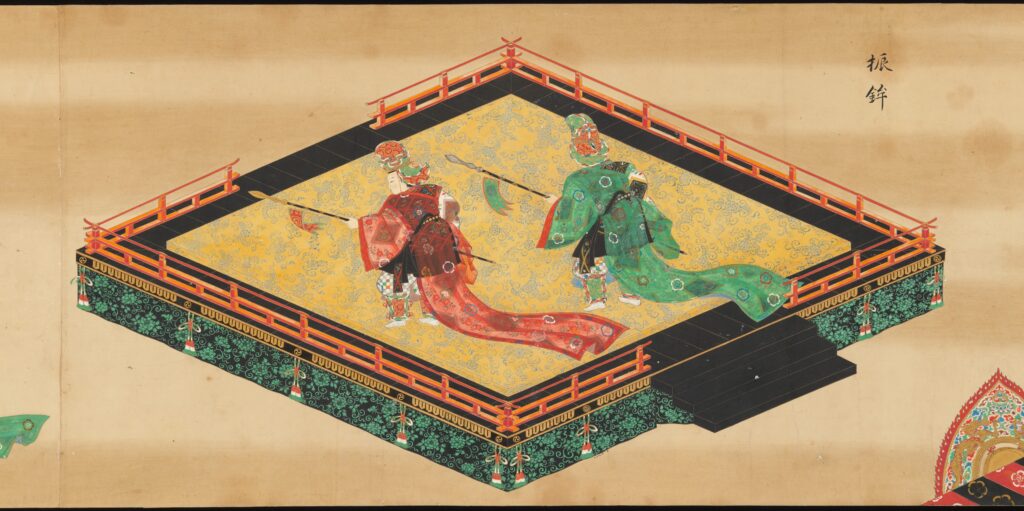This page provides an explanation of "Etenraku," a piece of Gagaku music that is often heard during the New Year in Japan.

There are standard pieces of music that play on TV and at shrines every New Year, including:
You won't experience a New Year without hearing these pieces, but actually, all of these are music for the koto (Japanese zither). (Specifically, "Sakura Variations" is for the koto and the kokyu, a traditional instrument, while the others are solo koto performances.)
Even the oldest of these pieces ("Rokudan no Shirabe") was created in the 17th century or later, and "Rokudan no Shirabe," "Sakura Variations," and "Haru no Umi" were all composed by Michio Miyagi, meaning they were created in the 20th century. In terms of Japanese history, this music is relatively recent.
However, one piece stands out among these New Year's classics.
The music with a unique sound that you hear at shrines and temples is a Gagaku piece called "Etenraku."
While koto music dates back to at least the 17th century, with most being from the 20th century, Gagaku's origins go back 1400 years, with its current form of performance solidifying around the late 8th to 9th centuries.
Gagaku is one of the world's oldest musical arts, not just in Japan.

Gagaku is a type of music that is rarely heard in everyday life, yet it boasts a vast repertoire.
Among these, why is "Etenraku" specifically chosen to be played during the New Year?
The origin of "Etenraku" is still not entirely clear, but it is said to have been performed at entertainment competitions held after ceremonies at temples and such. Thus, it is not necessarily music associated specifically with the New Year.
However, it is certain that "Etenraku" is among the most famous pieces in the Gagaku repertoire.
"Etenraku" is characterized by its short melody, making it easily memorable and pleasant to the ear. As a result, it has been arranged into various forms, including the "Kuroda Bushi," pop songs, and hymns.
The presence of this short, catchy phrase allows "Etenraku," uniquely among Gagaku pieces, which are generally not easily arranged, to spread widely among the public.
In essence, during the New Year, there is a desire to listen to traditional Japanese music. When thinking of traditional Japanese music, Gagaku comes to mind, and when thinking of Gagaku... "Etenraku."
Therefore, it is reasonable to assume that "Etenraku" is used during the New Year for these reasons.

To be a bit more specific, there are three variations of "Etenraku": "Hyojo Etenraku," "Oshikicho Etenraku," and "Banshiki Etenraku." Each sounds completely different to the listener at first glance, but the most famous among these is "Hyojo Etenraku."
(Hyojo = Hyojo scale, Oshikicho = Oshikicho scale, Banshiki = Banshiki scale)
Therefore, the formal name of the Gagaku music played during the New Year is "Hyojo Etenraku."
■
For those interested in learning more about Gagaku, please see the following articles:
The History of Gagaku | China, Korea, Japan ※This content is specialized.